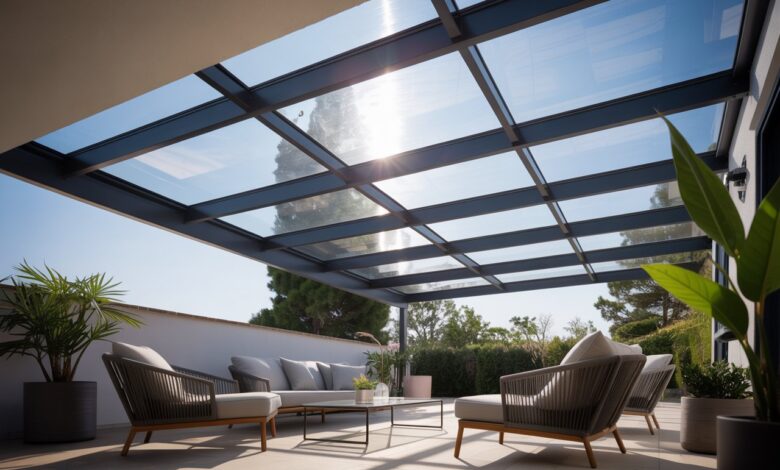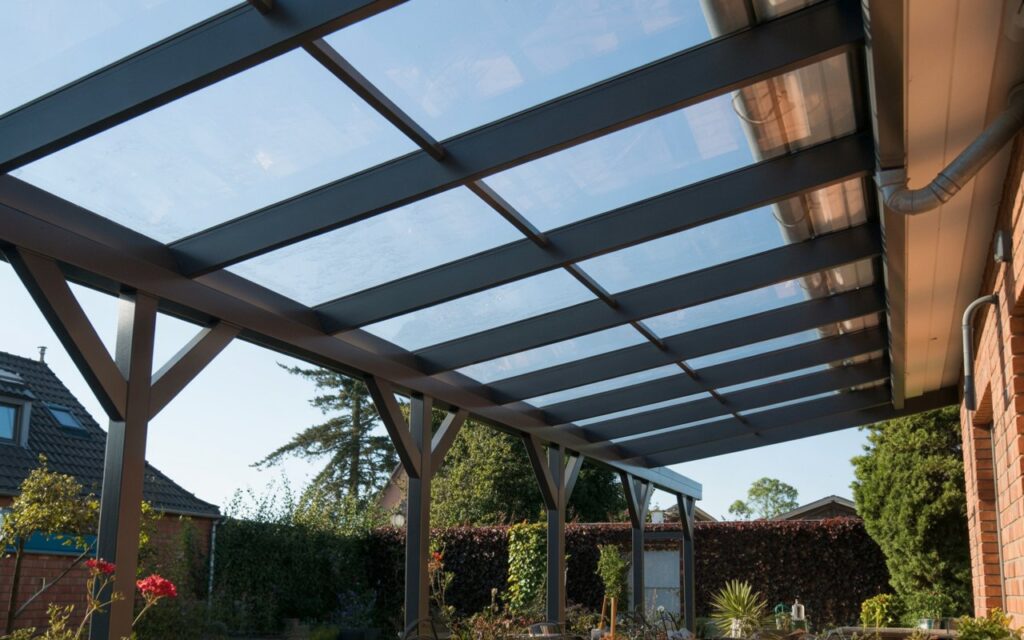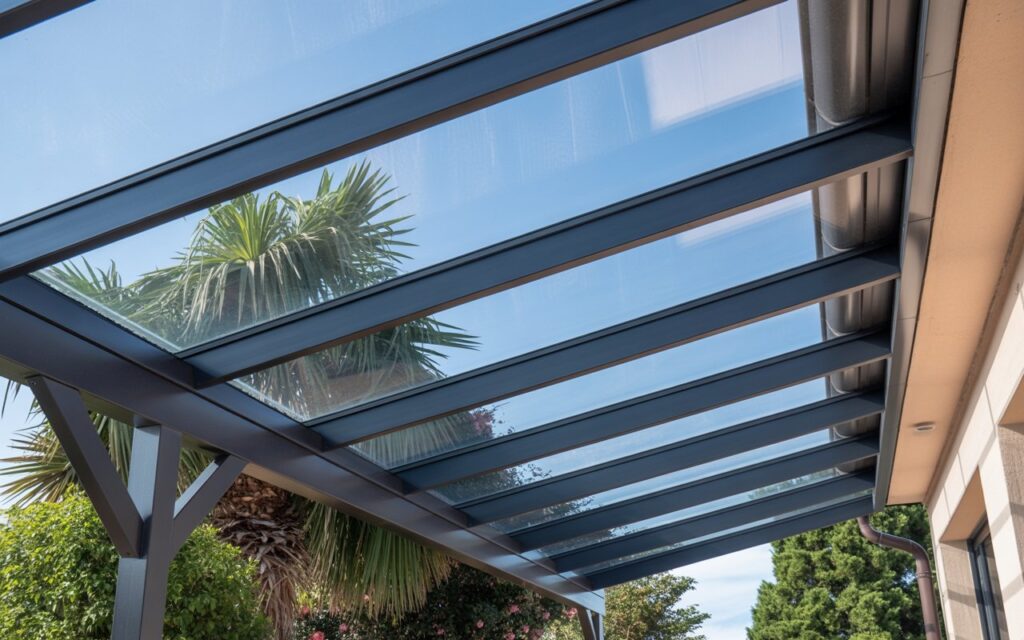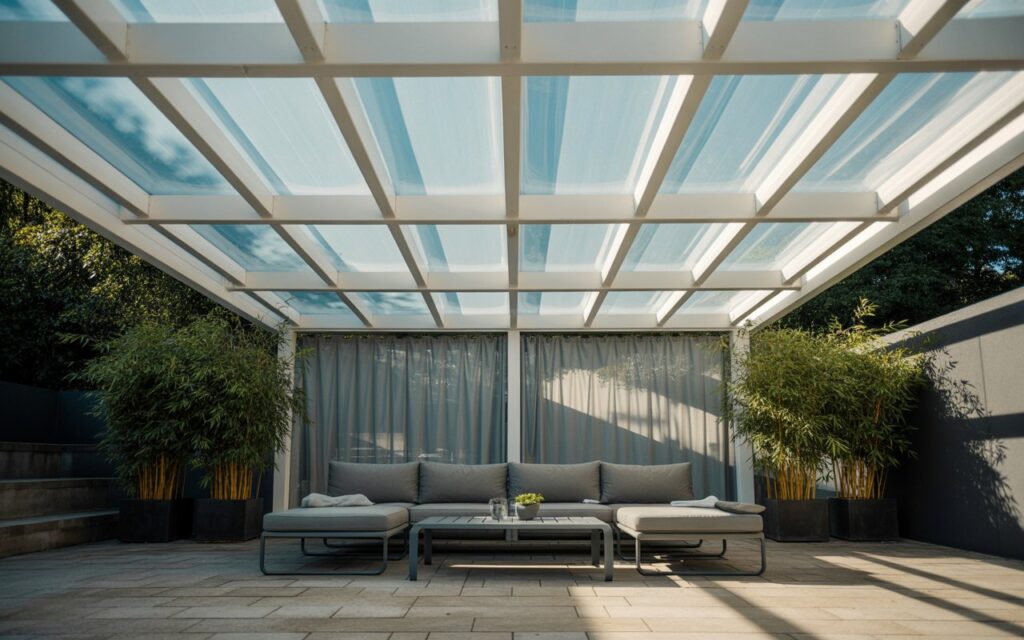The acrylDach Roof: A Clear, Modern Way to Enjoy the Outdoors

An acryldach is a roof made from acrylic panels. Think of it like strong, clear plastic that lets in daylight. It looks clean and modern. It works over patios, carports, balconies, and walkways. You also see it on pergolas and small garden rooms.
Acrylic is light but tough. It does not rust. It does not rot. It keeps its shape in sun and rain. An acrylDach can be crystal clear, soft white, or lightly tinted. So you get light without harsh glare if you want. That is why many homes in 2025 use an acrylDach instead of a heavy roof.
Why people choose an acrylDach in 2025
Daylight matters. We all want bright spaces that feel open. An acryldach brings in natural light while still blocking most rain and dirt. You can sit outside when the weather is mixed. You can work on a hobby table and still see every detail. The space feels bigger without adding walls.
Cost and weight also help. Acrylic panels are lighter than glass. That means smaller frames, fewer supports, and simpler builds. Transport is easier. Many frames are aluminum or treated wood. Together with an acrylDach, the whole structure stays slim and neat. It looks fresh, not bulky.
Where an acrylDach fits best

Patios love acrylic roofs. Picture a Saturday snack with friends while a soft rain falls. You still sit outside. You still feel the day. An acryldach also helps over a back door. You do not get soaked while finding your keys. Simple things like that make daily life nicer.
Carports and bike shelters are great uses too. The acrylic keeps vehicles dry and clean. Light still reaches the area, so it never feels like a dark cave. Balconies gain cover without losing the view. Garden paths stay drier. Even a small side return can feel useful again with an acrylDach above it.
A quick story: Sara’s small patio
Sara had a tiny patio that felt useless nine months of the year. She wanted cover, but not a dark lid. She chose an acryldach with opal (milky) panels. Now the space glows with soft light on cloudy days. In summer, it cuts the harsh glare at noon. She eats breakfast out there most days, even in light rain. The patio finally “works.”
Her friends asked if she added lights. She did not. It is just the way the acrylic spreads the daylight. That is a simple example of how the right acrylDach turns a dead zone into a favorite spot.
What the panels are made of
Acrylic (also called PMMA) is clear, stiff, and weather-resistant. Good panels for an acryldach have UV protection on at least one face. This helps the sheet keep its clarity for many years. It also helps reduce yellowing from long sun exposure.
You can pick from different styles. Flat sheets give a clean, minimal look. Corrugated sheets add strength and let water run fast. Some panels are clear. Some are opal for soft light. Some are tinted grey or bronze to reduce glare. For a home, the choice is often about how you want the light to feel beneath the acrylDach.
How it looks and feels
Design is not only about strength. It is also about the feeling under the roof. A clear acryldach makes the sky part of your room. You see clouds, trees, and stars. It feels open. An opal acrylDach turns sunlight into a smooth, even glow. It feels calm and cozy. A bronze tint warms the tone and can pair well with wood frames.
Edges and trims matter too. Neat gutters and slim flashings make the roof look finished. Hidden fixings keep the view clean. Choose a frame color that suits your home. Black frames look sharp and modern. Warm wood looks natural and soft. In 2025, many people mix materials for balance—black aluminum posts with a timber beam and a light, bright acrylDach above.
Everyday comfort: heat, glare, and noise

A good acryldach balances light and comfort. On hot days, clear panels can feel bright. If your patio faces strong sun, a light tint or opal panel can help. It softens glare and reduces heat build-up. Plant shade also helps—climbing vines over one side add a cool edge without making it dark.
Rain noise is another point. Acrylic reduces noise better than thin metal sheets, but heavy rain will still sound like rain. Many people enjoy that gentle tap. If you want it quieter, choose thicker panels, add a small slope to move water faster, and use soft furnishings under the roof. Cushions, outdoor rugs, and planters help absorb sound under an acrylDach.
acrylDach vs. glass vs. polycarbonate (simple view)
Glass looks premium and stays clear for many years. But it is heavy and needs stronger frames. It also costs more to move and fit. An acryldach gives a similar open look with far less weight. It is easier to cut and handle, which keeps projects simple and fast.
Polycarbonate is another common option. It is very tough and good for impact. But it can have a “hazy” look, especially in multiwall sheets, and it may scratch more easily. Many homeowners pick an acryldach when they want a clearer view and a cleaner, glass-like feel without the weight and cost of real glass.
Planning the basics: size, slope, and drainage
Start with the space you want to cover. Measure width and depth. Then think about head height so it never feels low or cramped. A gentle slope helps water run off the acryldach. Even a small fall is fine if gutters are well placed. Keep the highest edge nicely sealed to your wall with proper flashing.
Drainage is easy to miss. Plan where the water goes. A simple gutter and downpipe might be enough. For bigger roofs, think about more than one downpipe, or a wider gutter, so heavy rain does not spill over. Good drainage protects both the roof and the area below your acrylDach.
Safety, permits, and neighbors
Check local rules. Many small canopies are simple, but rules vary by city. In 2025, some councils care about how a structure fixes to a wall or how close it sits to a boundary. A short call can save trouble later. If you live in a shared building, tell your neighbors early. Most people support a tidy, light roof that lifts the area.
Also plan safe access for cleaning and checks. You should be able to reach gutters without risky moves. If the acryldach is high, build in safe ladder points or use a professional once or twice a year. Safety plans keep the roof easy to care for over time.
Installing your acrylDach: simple steps
Now that you know what an acryldach is and how it works, let’s look at how it’s actually installed. Don’t worry — it’s easier than it sounds. Most people either buy a ready kit or have a local builder fit it in one day.
First, measure the space carefully. Then, mark where each support post and wall bracket will go. The slope should face away from your house so rain can run off easily. Once the frame is fixed, the acrylic panels slide or screw into place with sealing strips. That keeps them watertight and secure.
If you’re handy with tools, you can do small projects yourself. Many kits include pre-cut panels, aluminum rails, and rubber seals. Just follow the step-by-step guide that comes with the kit. For bigger or higher roofs, though, it’s best to get professional help — they’ll ensure your acrylDach is safe and neatly finished.
Choosing the right panel thickness
Acrylic panels come in different thicknesses, usually between 3 mm and 10 mm. For a small patio roof, 4 mm or 5 mm is enough. For bigger spans, thicker sheets work better because they stay firm and resist bending.
You can also choose single or double-layer sheets. Double-layer (sometimes called twin-wall) panels keep heat better and cut glare, but they look a little more opaque. If you want a crystal-clear roof, go for single-layer solid acrylic. It’s bright, strong, and looks just like glass.
When you buy your acryldach, ask about UV protection and warranty. High-quality panels can last over ten years without turning yellow or dull.
How to take care of your acrylDach

Keeping your acryldach clean is very easy. You don’t need any fancy products. Just use mild soap and warm water. Wipe with a soft sponge or cloth. Avoid rough brushes because they can scratch the surface.
Rain will wash most dust away, but it’s good to give it a gentle clean every few months. Always clean on a cool day, not under strong sun. That way, soap doesn’t dry too fast and leave marks. If your acrylDach has gutters, clear out leaves and dirt once or twice a year so water keeps flowing.
If you see a small scratch, you can buff it out with special acrylic polish. You’ll find it at most hardware stores. It takes just a few minutes and keeps your roof looking new.
How much an acrylDach costs in 2025
Prices depend on size, frame material, and design. A small DIY acryldach kit can start around $250–$400. A medium-size patio cover might cost $600–$1,000. A big custom one with a metal frame and tinted panels can go up to $2,000 or more.
It sounds like a lot, but when you compare it with a glass roof, it’s still much cheaper. Plus, you save on maintenance — no repainting, no heavy cleaning. For most homeowners, an acrylDach is a smart one-time investment that pays off every time they sit outside, rain or shine.
Smart add-ons and upgrades
Want your acryldach to do more? In 2025, people add small extras that make the space cozy year-round. For example, LED strips along the frame give soft light at night. Motion sensors can turn lights on when you walk out. You can even fit small heaters for chilly evenings.
Another fun trend is adding retractable side screens or curtains. They block wind and add privacy. Solar panels on top are growing popular too — lightweight versions that fit right over the acrylic sheets. Imagine a patio roof that also powers your garden lights. That’s the kind of modern comfort people want now.
Real-life example: Tom’s carport makeover
Tom used to park under an old tin roof that made too much noise in the rain. It rusted and looked dull. He replaced it with a clear acryldach and aluminum frame. The result? A clean, bright carport that feels open but still dry. The acrylic cuts the noise, and the space even looks bigger. Now, Tom’s carport blends with his modern home instead of standing out.
Stories like Tom’s show how small changes can make daily life better. A good acrylDach doesn’t just protect you — it lifts how a space feels.
Final thoughts: why acrylDach makes sense
An acryldach is simple, stylish, and strong. It fits anywhere — a patio, carport, balcony, or walkway. It lets in sunlight but keeps out rain. It’s light, easy to install, and needs little care. It can last for many years and make your outdoor space useful all year round.
If you love light, comfort, and easy living, an acrylDach is one of the best upgrades you can make in 2025. It’s modern, affordable, and makes every day outside a little brighter.



